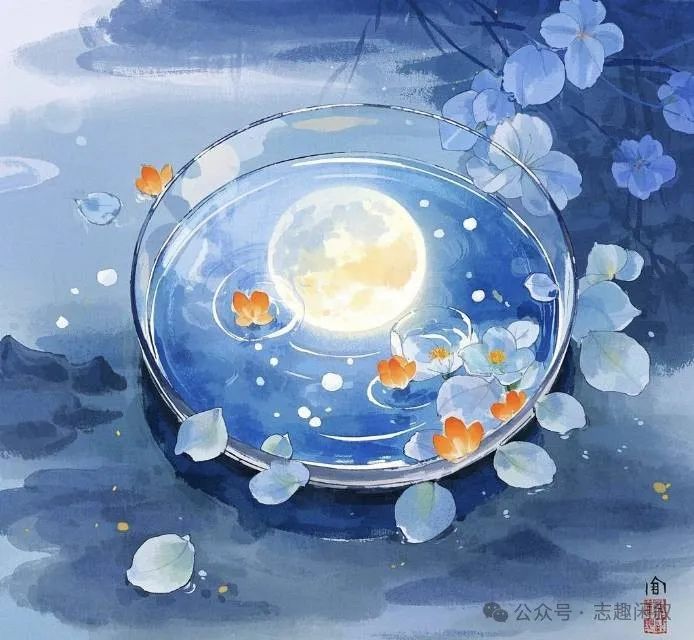1. The Inverted Universe: An Epistemological Revolution in Textual Structure
‘The Flowers in the Mirror’ begins with the descent of the Flower Fairy into the mortal realm, constructing a tripartite narrative dimension of heaven, earth, and foreign lands. This spatially folded narrative strategy resembles the philosophical allegory of Zhuangzi’s butterfly dream: as Tang Ao travels through the Kingdom of Gentlemen, the Kingdom of Women, and the Kingdom of the Heartless, the seemingly absurd tales from overseas serve as a mirror reflection of the real world. The epistemological revolution completed by Li Ruzhen with his bizarre writing style predates Borges’ ‘The Garden of Forking Paths’ by a century and a half—each foreign kingdom acts as a prism of reality, refracting the constructs of civilization such as etiquette, the imperial examination, and gender into absurd fables.
In the depiction of the ‘Two-Sided Kingdom’, the limitations of human cognition are concretized into a reversible two-faced head. This metaphor for the epistemological dilemma aligns with Kant’s philosophical proposition that ‘the thing-in-itself is unknowable’: when the cognitive subject attempts to grasp the essence of the object, they can only touch the ‘front’ of the phenomenal world, while the ‘other side’ hidden behind the hairpin remains a cognitive black box that reason cannot penetrate.

2. Deconstruction and Reconstruction: The Semiotic Tyranny of Etiquette Society
The gender inversion in the Kingdom of Women is arguably the most radical social experiment in the history of Chinese literature. The scenes where men are forced to bind their feet, paint their lips, and become pregnant are not only a satirical mockery of patriarchal society but also a complete deconstruction of gender essentialism. When the process of Lin Zhi Yang being forcibly ‘feminized’ is meticulously presented, Foucault’s ‘biopolitics’ receives an Eastern footnote: power constructs gender identity through the discipline of the body, and the painful foot-binding cloth is the materialization of power’s imprint.
A deeper critique lurks within the decayed literati of the ‘Gentlewomen’s Country’. Those Confucian scholars, who speak in archaic phrases, alienate language into a ritual of power. This insight into the alienation of language predates Wittgenstein’s theory of ‘language games’ and reveals the essence of symbolic violence: when knowledge becomes the currency of the imperial examination system, classical texts become shackles that bind thought. The talented women like Tang Xiaoshan breaking through the discipline of ‘a woman’s lack of talent is virtue’ is, in fact, a cultural uprising using poetics to resist symbolic tyranny.
3. The Paradox of Existence Between Reality and Illusion
The imagery of ‘mirror flowers and water moons’ in the novel constitutes a dual metaphor of ontology: the Flower Fairy’s reflection in the mirror at the Yaochi banquet suggests an eternal rift between the essence and appearance; the legend of Wu Zetian urging flowers to bloom in winter reveals the cognitive violence of humanity overstepping natural order. The subtlety of this dialectics of reality and illusion is akin to Lacan’s theory of the ‘mirror stage’—humans construct self-identity through the mirror image but can never bridge the gap between the real and the imaginary.
In the narrative twist of ‘Little Penglai’, this existential dilemma reaches its peak. Tang Ao’s pursuit of immortality and Tang Xiaoshan’s journey to find her father create an eternal tension between entering the world and escaping it. When the ‘Gentlemen’s Kingdom’ rebuilt overseas by Xu Jingye’s descendants ultimately falls, Li Ruzhen punctures the illusion of the Confucian utopia: the so-called ideal society is merely a compensatory reflection of real-world shortcomings, just as the beautiful flower in the mirror is ultimately a projection in the void.
4. The Prelude to Archaeology of Knowledge
The encyclopedic writing strategy of ‘The Flowers in the Mirror’ constitutes a pre-modern archaeological site of knowledge. From the Xuanji diagram’s palindrome poetry to the Qihuang medical techniques, from lantern riddles to overseas natural history, the knowledge fragments piled within the text form a peculiar intertextual network. This writing style foreshadows Foucault’s method of archaeological knowledge: within the seemingly chaotic accumulation of knowledge lies the hidden structure of power discipline.
The civil service examination of the talented women in the latter half of the novel is, in fact, a grand performance of the knowledge system. When the elegant arts of qin, chess, calligraphy, and painting devolve into examination techniques, and when the dogma of ‘The Lessons for Women’ clashes with the romanticism of ‘The Songs of Chu’ in the examination hall, Li Ruzhen reveals the paradoxical nature of knowledge production: civilization progresses through the accumulation of knowledge, yet becomes lost in the alienation of knowledge. This critical consciousness resonates across time and space with the Frankfurt School’s analysis of the culture industry.
Conclusion: Reassessing Modernity in the Mirror Maze
The ultimate revelation of ‘The Flowers in the Mirror’ lies in its timeless reflection on modernity. As globalization compresses the world into a global village, and as we construct identities through digital mirrors, the overseas exotic lands depicted by Li Ruzhen continue to manifest: the phenomenon of ‘two-faced people’ in social media, the cognitive cocoons created by algorithmic recommendations, and the discourse battles over gender issues… these modern dilemmas were already foreshadowed in the mirror flowers and water moons of the early nineteenth century.
Amidst the revelry of deconstructionism and the nihilism of postmodernism, ‘The Flowers in the Mirror’ does not provide answers but offers an eternal self-reflection: must the progress of civilization inevitably accompany alienation? Can the accumulation of knowledge reach truth? Perhaps, just as the Flower Fairy sees in the mirror, what is reflected is not a specific flower shadow, but the eternal inquiry projected by the cognitive subject—within this intertwined maze of reality and illusion, what matters is not solving the riddle but maintaining a clear view of the mirror’s reflection.

